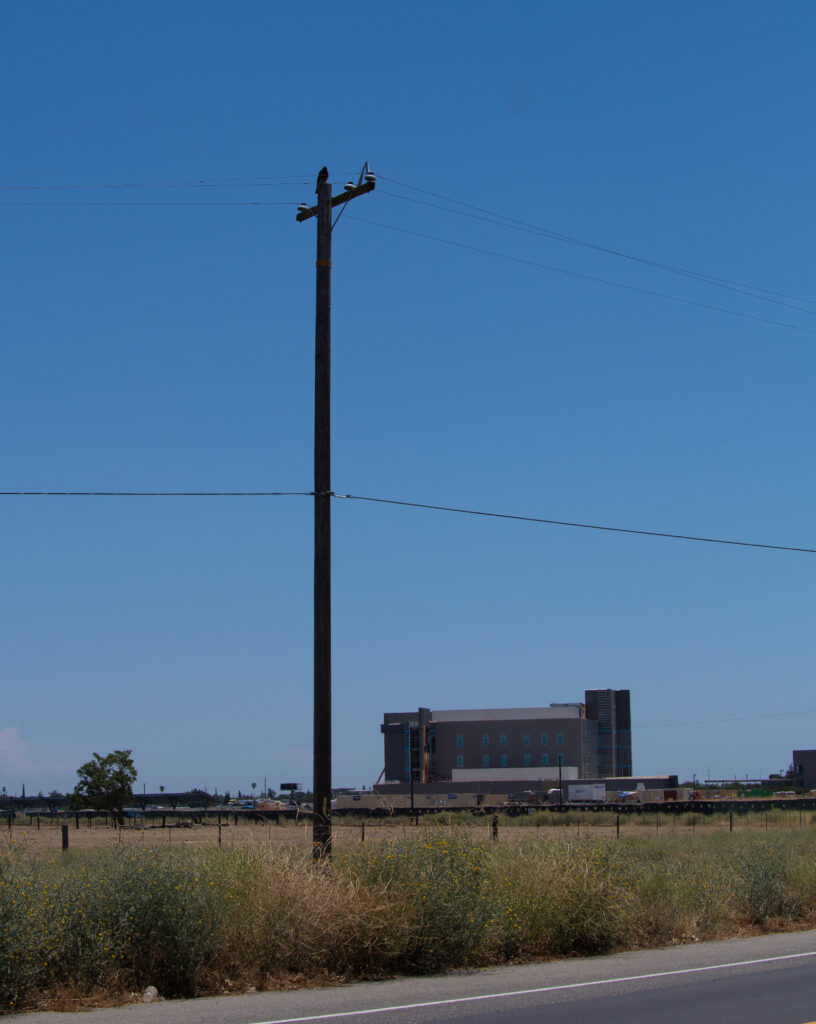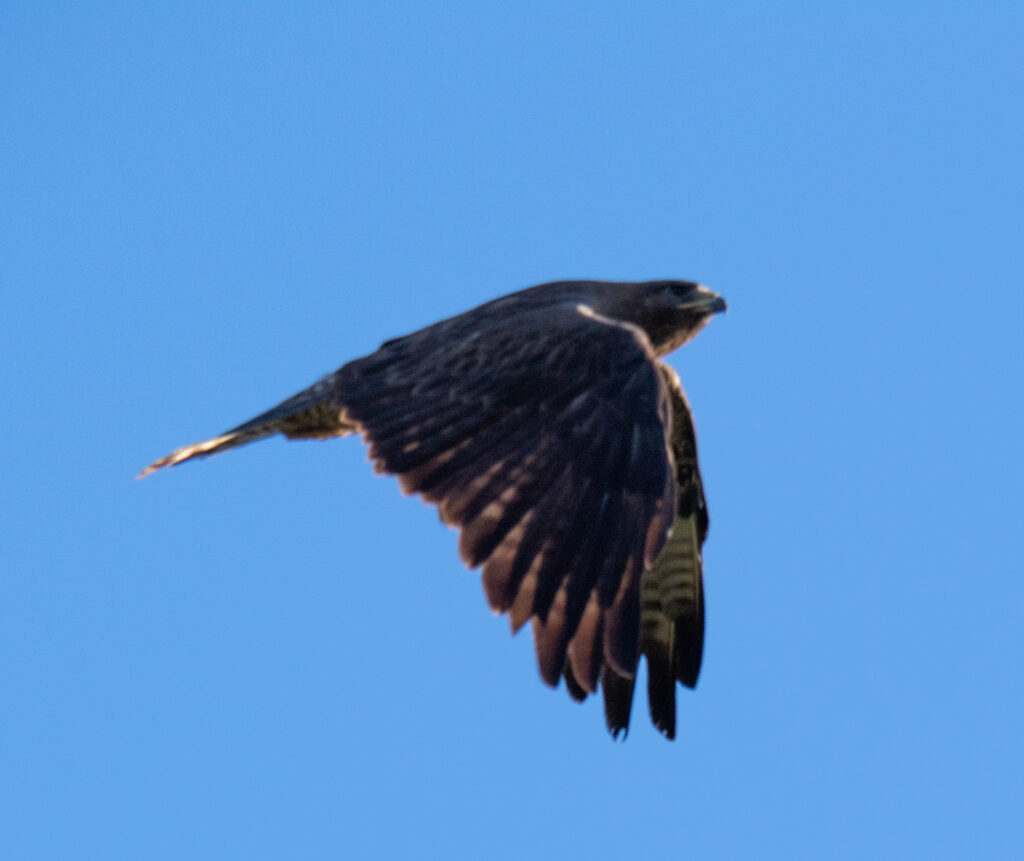
HAWKS AT THE HOSPITAL
Does photographing wildlife require special visits to parks and preserves? Not always. You can find them at home or work if you care to look. A case in point are the hawks at San Joaquin General Hospital.
The hospital, my workplace, is located in French Camp, California, a small rural enclave amid urban sprawl. It’s a short hop from Interstate-5 along country roads that traverse open fields.

On one of those, Manthey Road, I recently spotted a hawk. It was perched, day after day, atop some poles lining the road.

A word about spotting hawks while driving. This is a skill I learned from Steve Mattheis, a photographer in Jackson Hole, Wyoming. You pay attention to both the road and the surroundings, searching for breaks in patterns.

Hawks favor poles or overhead wires. You check these as they pass by. They all look the same, except for the one with the hawk. With some practice I have become adept at spotting them.

Once I discovered the hawk on Manthey Road, I began bringing my camera along. I identified the bird on my early downloaded images as a Swainson’s hawk. This is a migratory raptor that traverses enormous distances between the southern and northern hemispheres, stopping in our area to breed in spring and early summer.

The most common year round hawk in our area is the red tail, a skittish bird that flies away soon after you approach with a camera.
Swainson’s is more tolerant of humans, apt to remain perched, even when you get close. But it too eventually flies, putting on a spectacular display of stern eyes, sharp talons and colorful feathers.

Early on I spent few precious minutes with the hawk, concerned about getting to work on time. Later, on a leisurely Sunday, I spent more time with it in the morning and late afternoon. It turned out to be a day of surprises, good and bad.

The bird photographed best in the westerly light of the late afternoon sun. That afternoon I tracked the bird as it flew off its pole and onto different spots in the expansive hospital campus, eventually landing high atop a pine tree near the ER ambulance bay.

The best vantage point was a nearby mound of earth that is the hospital’s helipad.

There, the first surprise: Zooming in on the treetop I spotted not one, but two hawks. The second turned out to be mostly perched on that tree, probably guarding a nest, although I failed to see one.
I returned home that night with several hundred shots that I thought would be awesome. That’s when I got my second surprise. The photos were bad, off focus and with the birds underexposed.

It did not take long to discover the problem. My camera’s autofocus (AF) was accidentally set wrong.

The camera has two main AF settings: AF-S for static subjects, like landscapes, and AF-C for subjects in motion. Capturing birds in flight requires AF-C. The camera was in AF-S.
Seriously disappointing!

Undaunted. I returned to the scene the next day and redid the shoot. Wildlife is unpredictable. You can’t count on them giving a repeat performance.
To my surprise they did.

The pole sitter was in its usual spot; he gave me a few fly-bys. So was the one guarding the tree by the ER.
With the AF properly set, I now had the best shots.

Lessons learned:
From the first time I spotted the hawk on a pole, it took repeated observations for nearly a month before I got my really good shots.
Random encounters with a subject may sometimes yield good results, but for great results you have to do some homework, get to know the animal and its habits, and learn what time of the day affords the best light.

It is also crucial to confirm proper camera settings before a shoot. I often do this as an exercise akin to a pilot’s pre-flight checklist. But sometimes, in the excitement of the moment, it is easy to forget and plunge into a fruitless shoot.
Finally, it helps to keep a keen eye for interesting wildlife no matter where you are. Some are hiding in plain sight where you live and work.










